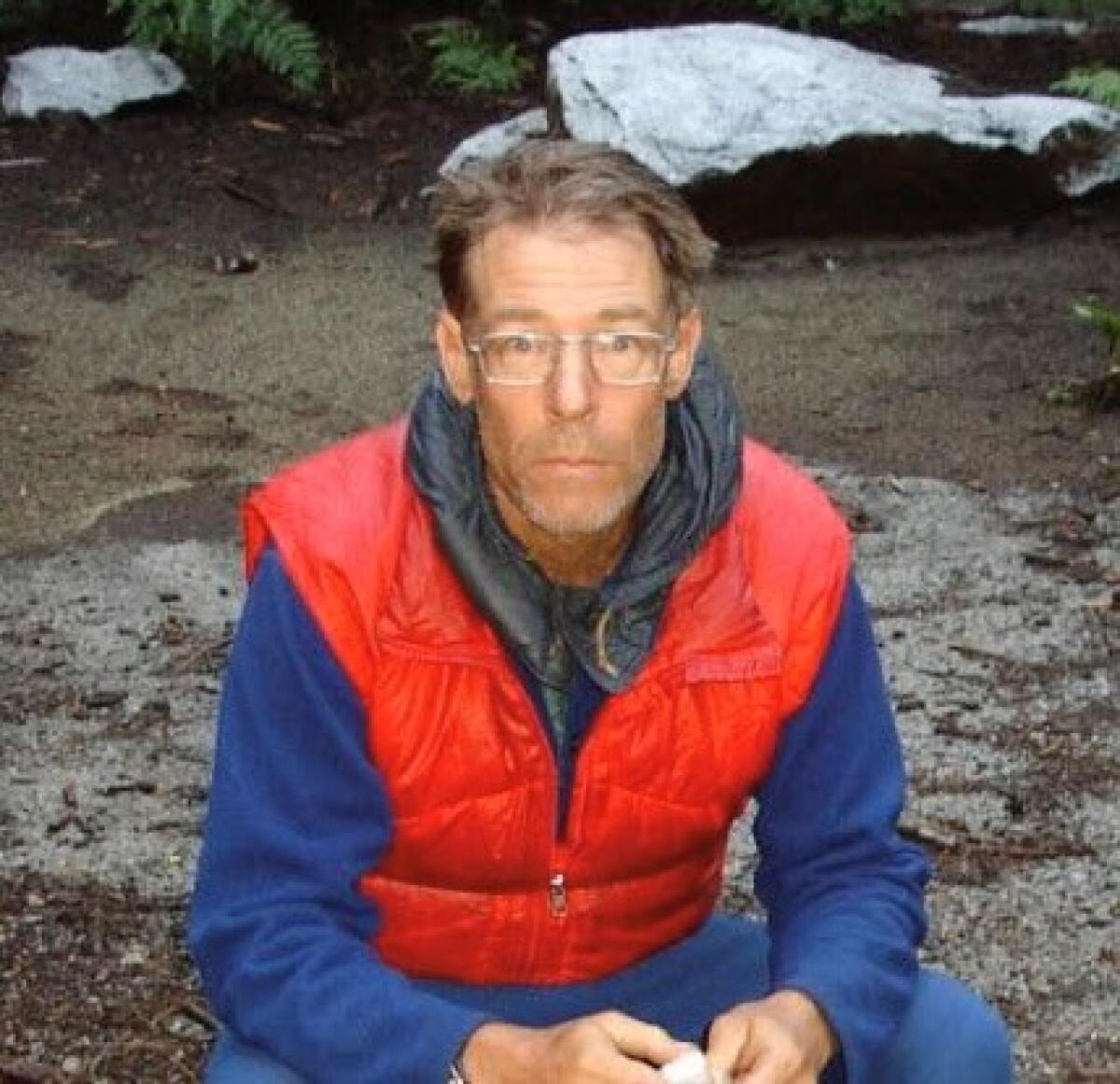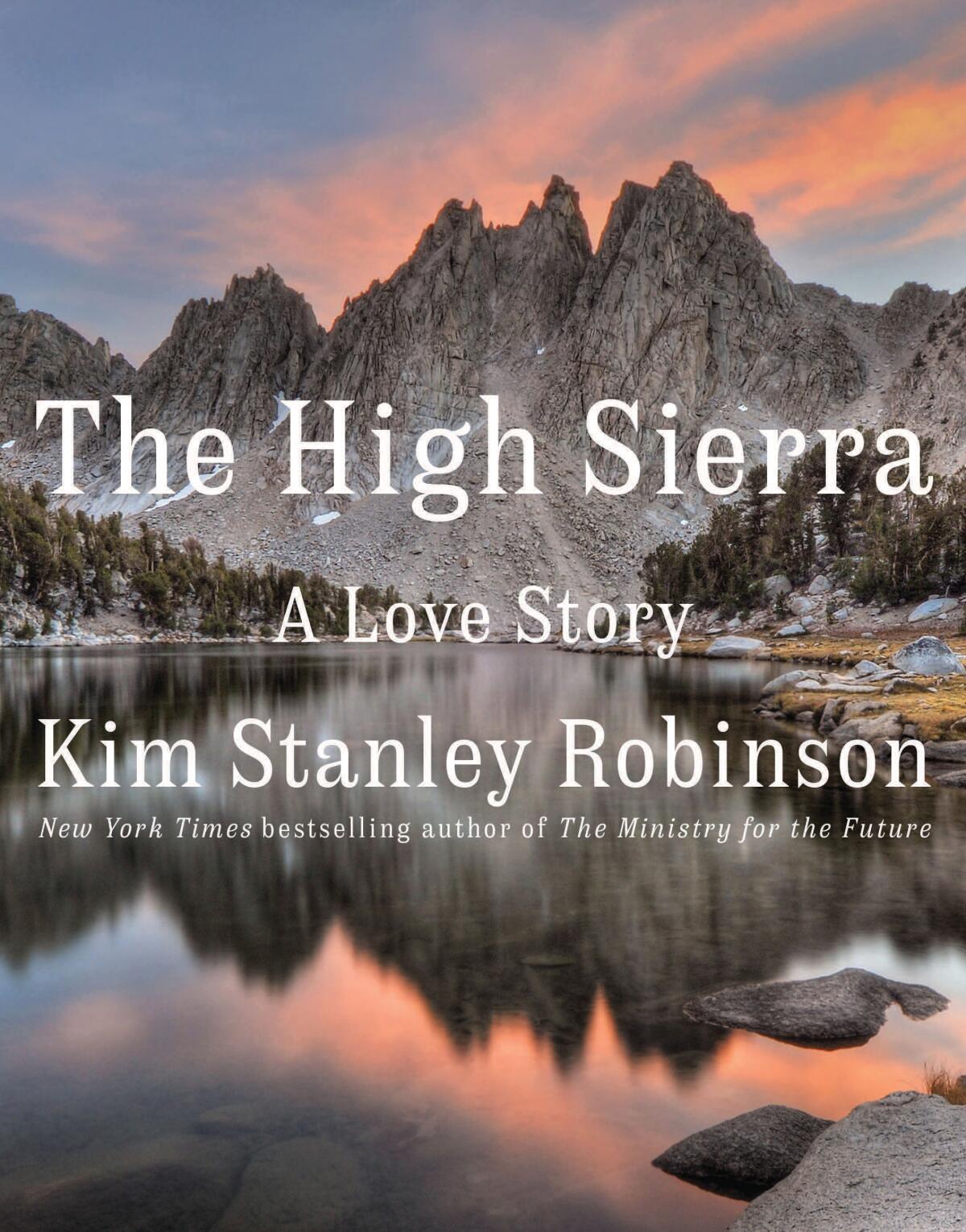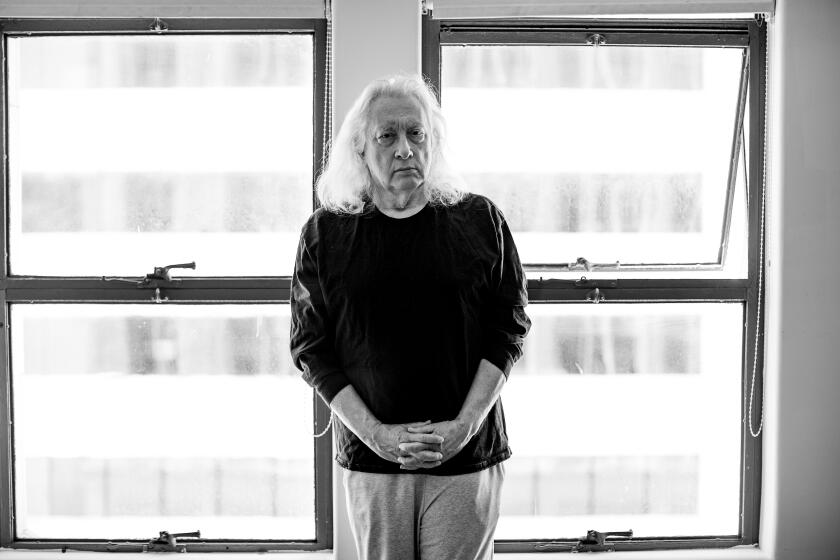Sci-fi master Kim Stanley Robinson on the Sierra and why humans might just ‘squeak by’

- Share via
On the Shelf
The High Sierra: A Love Story
By Kim Stanley Robinson
Little Brown: 560 pages, $40
If you buy books linked on our site, The Times may earn a commission from Bookshop.org, whose fees support independent bookstores.
Kim Stanley Robinson published his debut novel, “The Wild Shore,” in 1984. Imagining a postindustrial America in the wake of a devastating nuclear attack, it became the first volume in his “Three Californias” trilogy, which frames a series of possible futures after environmental devastation. In the nearly 40 years since, Robinson has established himself as a visionary science fiction writer — the author of more than 30 books, including the Hugo Award-winning “Green Mars” and “Blue Mars.” He is also a leading advocate on environmental issues, having spoken at the United Nations Climate Change Conference in Glasgow last fall.
Yet if his May book, “The High Sierra: A Love Story,” is any indication, it may be most appropriate to think of Robinson as a humanist. In this, his first work of general nonfiction, he blends personal narrative, survival tips and geologic and cultural perspectives to create a multidimensional portrait of both the terrain of California’s glorious range and his place within it. “I’ve been going to the Sierras for half a century,” he explains, “and thinking about a book about them for about 30 years, and it began to seem like I’d better get to it while I was still ambulatory, so to speak.”
Recently, Robinson and I corresponded via email to discuss the book, climate issues, his devotion to this landscape and walking as a creative enterprise.
Kim Stanley Robinson maps the future’s gray areas
“The High Sierra” is, among other things, a field guide of sorts. You discuss equipment, routes and the history of the region. How did it evolve?
When the pandemic shut down travel, I sat in my front courtyard and wrote every day, getting down everything I wanted to say about the Sierra. There was a lot of it, and there were a lot of different topics I wanted to cover, including my own Sierra memoir, the geology of the range, history of its people, some route suggestions and gear advice, a bibliography and so on. Early on I realized it would be next to impossible to organize all this as a single flow of thought, so I began to break it into categories. Once I had a taxonomy of chapter types, I wove them together, with the through line being my Sierra life from the age of 21 to around 68.

What was behind the impulse, as a writer of fantastical fictions, to write something that’s not-quite-memoir, not-quite-history?
I think my Sierra life has been very characteristic, so it can serve as a type for a fairly common experience: I discovered the Sierras when young, fell in love and went back as often as I could, as a backpacker and scrambler, for the rest of my life. Thousands have done this, and my story is not much different from theirs. For me, this is as much of a memoir as I care to write. For one thing, it captures most of what I’ve done that is at all interesting to tell others about. Aside from the Sierras, I’ve been a suburban househusband who gardens and spends a lot of every day typing. Even my Sierra life is basically contemplative and not enormously dramatic. But the range itself is something to write about, and I’ve had some adventures, so I decided that if I wanted to describe it properly, I had to tell the story of my time up there.
Part of your focus in “The High Sierra” has to do with climate change. Are you at all optimistic that we can save ourselves from a climactic death spiral?
Death spiral is going too far, although I suppose a worst-case scenario might include a mass extinction event and a devastated human civilization. So, it doesn’t seem right to proclaim all is well. We’re in a moment of extreme danger for the biosphere and humanity. But now everyone knows that, even those who try to deny it, and it’s possible we will respond well enough to squeak by. Same for the Sierras — that biome has survived hundred-year droughts before and will again, presumably.
Would the planet be better off without us?
We aren’t that important to the biosphere either way! If we wreck civilization and cause a mass extinction event, the biosphere will be fully reoccupied in a few million years by new species. Life will forge on. Humans, who knows. We are probably somewhat ineradicable — check out the near-extinction event from 73,000 years ago that left only a few thousand humans alive on the planet — that was a close one! And yet without our current capabilities we still squeaked through what appears to have been a decades-long volcanic “nuclear winter” event. So, best not to get apocalyptic about it. Put it this way — it could always get better or get worse, it will never end: So try for better.
Known for darkly kaleidoscopic novels like ‘Zeroville,’ Steve Erickson discusses abandoning fiction for the political passions of ‘American Stutter.’
Many of your novels, beginning with the “Three Californias” trilogy, address climate issues. What is fiction’s role — if any — here?
Maybe it helps. It helps to think ahead and imagine what will be needed, and science fiction is just a literary elaboration of that tendency and ability. Speaking for myself, I think utopian science fiction is both useful and interesting. Helpful and fun to think about.
How about “The High Sierra”?
There are many places on this planet that are intensely beautiful and lovable. You don’t need to burn a lot of carbon to have a good time. The basics of paleolithic contentment remain the same in us and are available at any time. The technological sublime is indeed sublime, but like a drug high — it’s expensive and can be tedious. The ordinary pleasures are better all around. Walking is one of those pleasures — we evolved to walk better! And walking in mountains is fun, but so is walking in cities, or anywhere really.
As a dedicated walker, I found your reflections on walking deeply resonant, especially the idea of it as a “devotional exercise.”
In the mountains as I’m walking — and this would be all day, every day for a week or so — there is time to think about writing, and life. A nice chapter that I cut: Virginia Woolf reviewed Thoreau’s journals when she was young (still Virginia Stephen, I think) for the [Times Literary Supplement]. In her review she reveals that she leafed through the journals and came on a section where Thoreau was going out at night with notebook and pencil in hand, writing down what he saw and thought in real time. A month later, she wrote “Monday or Tuesday” and then “The Mark on the Wall” and then “Jacob’s Room.” In short, she invented her version of “stream of consciousness” narration after reading Thoreau’s experiments in nighttime real-time writing!
You’ve been described as a “utopian.” What are your thoughts on the writer as advocate or activist, and your own role in this regard?
Utopian thinking and writing can be helpful in imagining a different and better social order than the one we have now. We need that better system, so it should help to write about it. For me, I want to write good novels: But what is a good novel? There must be more than one kind; and sometimes they help us to imagine new worlds. I think of my writing as my political contribution, but also I just want to make pleasing shapes in thoughts, like vases or poems. Happily, thinkers like Brecht and Aristotle have made it very clear that this is not any kind of real opposition, just a matter of art being important, always, in helping us to think and feel.
Obi Kaufmann’s ‘The Forests of California’ is the latest in a series that suggests we need to understand nature in order to save it.
Ulin is a former book editor and book critic of The Times.
More to Read
Sign up for our Book Club newsletter
Get the latest news, events and more from the Los Angeles Times Book Club, and help us get L.A. reading and talking.
You may occasionally receive promotional content from the Los Angeles Times.










